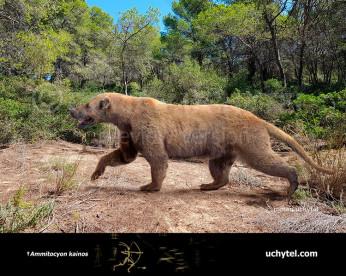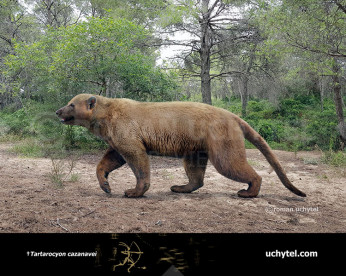Pseudocyon
202124202124Pseudocyon (†Pseudocyon (Lartet, 1851))
Amphicyonopsis
Class: Mammalia
Order: Carnivora
Suborder: Caniformia
Family: †Amphicyonidae
Subfamily: †Amphicyoninae
Time period: the Miocene of Eurasia and North America (23.3 - 7 Ma)
Size: Up to 3.8 meters long. 1,4 meters tall at the shoulder. Weight estimated at up to 700 kg.
Pseudocyon is a genus of amphicyonid which inhabited Eurasia and North America during the Miocene epoch living approximately 5.3 million years. Specimens were located in Belomechetskaia Russian Federation, Santa Cruz, New Mexico, Pontigne and Malartic, a la ferme Larrieu, France, and Nebraska. The largest fossil find was of a mandible (F:AM 49247) founded in New Mexico. The mass estimate derived from the mandible was about 773 kg, representing a very large individual of Pseudocyon. It is synonymous with Amphicyonopsis.
Pseudocyon (†Pseudocyon (Lartet, 1851))
Amphicyonopsis
Class: Mammalia
Order: Carnivora
Suborder: Caniformia
Family: †Amphicyonidae
Subfamily: †Amphicyoninae
Time period: the Miocene of Eurasia and North America (23.3 - 7 Ma)
Size: Up to 3.8 meters long. 1,4 meters tall at the shoulder. Weight estimated at up to 700 kg.
Pseudocyon is a genus of amphicyonid which inhabited Eurasia and North America during the Miocene epoch living approximately 5.3 million years. Specimens were located in Belomechetskaia Russian Federation, Santa Cruz, New Mexico, Pontigne and Malartic, a la ferme Larrieu, France, and Nebraska. The largest fossil find was of a mandible (F:AM 49247) founded in New Mexico. The mass estimate derived from the mandible was about 773 kg, representing a very large individual of Pseudocyon. It is synonymous with Amphicyonopsis.

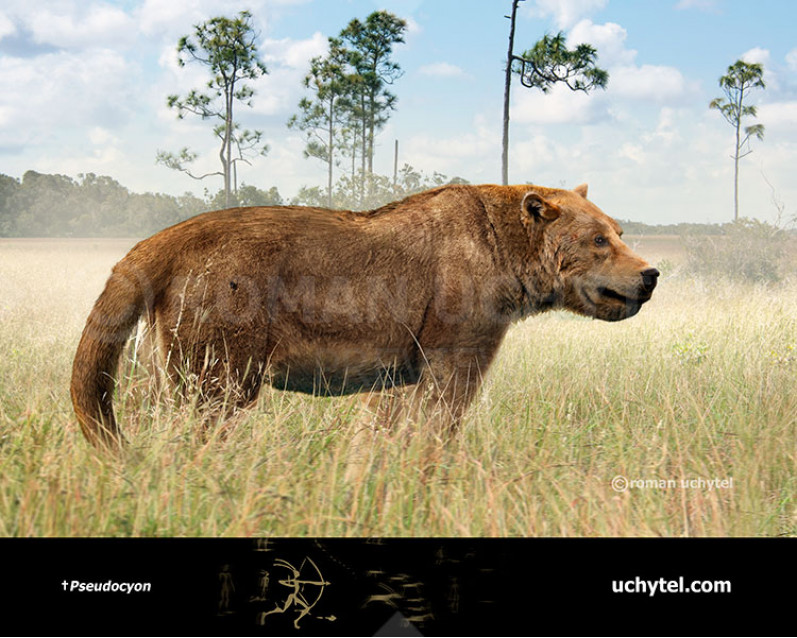

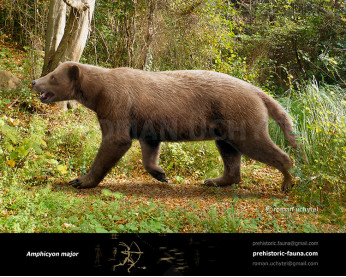
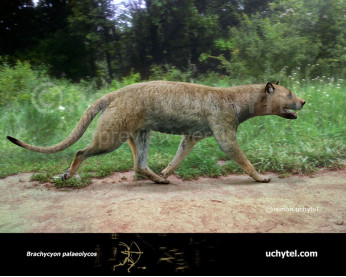

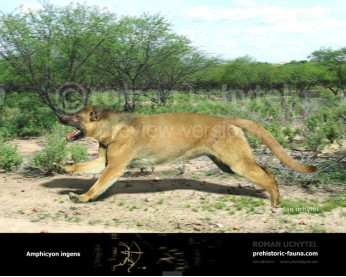
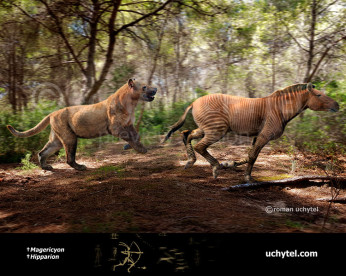
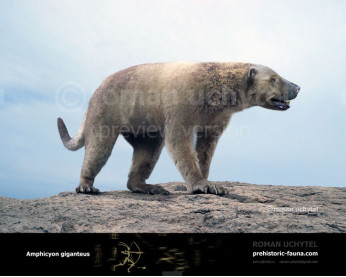
-346x277.jpg)
